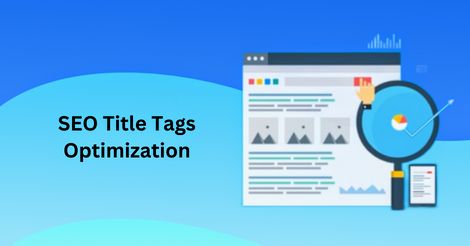8 Essential Steps Guide for Title Tag Optimization : In the ever-evolving landscape of search engine optimization (SEO), optimizing title tags is a fundamental practice that significantly impacts the visibility and ranking of your web pages. Title tags are not just random pieces of text; they play a crucial role in helping search engines understand the content and context of your web pages.

What Is a Title Tag?
A title tag, often referred to as the <title> tag in HTML, specifies the title of a webpage. It appears in the browser’s title bar and serves as the clickable link in search engine results. Properly optimized title tags serve as the first point of contact between your webpage and potential visitors, making them a critical aspect of on-page SEO.
Why Are Title Tags Important?
- Improved Click-Through Rates (CTR): An optimized title tag acts as a headline for your web page in search results. When it’s compelling and relevant to the user’s query, it increases the likelihood of users clicking on your link. A well-crafted title tag can make your result stand out among others, driving more organic traffic to your site.
- SEO Ranking Signals: Search engines consider title tags one of the most crucial on-page SEO factors. Proper optimization of title tags can positively impact your search engine ranking by helping search engines understand the topic and relevance of a webpage.
- Enhanced User Experience: A clear and concise title tag provides users with an immediate understanding of your webpage’s content. When users find what they’re looking for effortlessly, it improves their overall satisfaction with your website.
- Social Sharing: When users share your content on social media platforms, the title tag often becomes the default title for the shared link. Crafting an enticing title tag encourages more social sharing, ultimately enhancing your content’s visibility.
How Google Picks Up Title Tags
Google picks up title tags through several methods:
- From HTML: Google crawls web pages and extracts title tags directly from the HTML source code.
- User-Defined Title Tags: If you specify a title tag using the
<title>element in your HTML, Google will use that as the primary title for the page. - Content Relevance: Google may also analyze the content of your page and generate a title based on the relevance of the content to the user’s query.
8 Essential Steps for Title Tag Optimization
- Understand the Page’s Context Within the Site: Consider where the page fits into the overall hierarchy of the website. Each page deeper into the site should have a more specific and detailed title tag.
- Target the Best Keyword: Include your target keyword in the title tag. Ensure you’re targeting the most relevant keyword by checking the Parent Topic (the keyword sending the most traffic to the top-ranking page for your keyword).
- Add Secondary Keywords: Incorporate popular terms related to your topic. Look at the keywords sending the most traffic to the top-ranking page and include them naturally in your title tag.
- Keep It Concise: Title tags should be short and to the point. Aim for around 50-60 characters.
- Include the Main Keyword Closer to the Beginning: Place your target keyword near the start of the title tag.
- Avoid Keyword Cannibalization: Ensure title tags aren’t duplicated on any pages to prevent confusion.
- Make It Compelling: Craft a title that entices users to click. Use action words and create a sense of urgency or curiosity.
- Remember the Impact: While title tags are essential, they work in conjunction with other on-page elements. Keep their impact in perspective.
Remember, a well-optimized title tag can significantly enhance your SEO efforts and improve user engagement. Take the time to create compelling and relevant title tags for each of your webpages.


Leave your comment